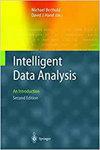Enhancing link prediction efficiency with shortest path and structural attributes
IF 0.8
4区 计算机科学
Q4 COMPUTER SCIENCE, ARTIFICIAL INTELLIGENCE
引用次数: 0
Abstract
Link prediction is one of the most essential and crucial tasks in complex network research since it seeks to forecast missing links in a network based on current ones. This problem has applications in a variety of scientific disciplines, including social network research, recommendation systems, and biological networks. In previous work, link prediction has been solved through different methods such as path, social theory, topology, and similarity-based. The main issue is that path-based methods ignore topological features, while structure-based methods also fail to combine the path and structured-based features. As a result, a new technique based on the shortest path and topological features’ has been developed. The method uses both local and global similarity indices to measure the similarity. Extensive experiments on real-world datasets from a variety of domains are utilized to empirically test and compare the proposed framework to many state-of-the-art prediction techniques. Over 100 iterations, the collected data showed that the proposed method improved on the other methods in terms of accuracy. SI and AA, among the existing state-of-the-art algorithms, fared best with an AUC value of 82%, while the proposed method has an AUC value of 84%.利用最短路径和结构属性提高链路预测效率
链路预测是复杂网络研究中最重要和最关键的任务之一,因为它寻求在当前链路的基础上预测网络中缺失的链路。这个问题在各种科学学科中都有应用,包括社交网络研究、推荐系统和生物网络。在以前的工作中,链接预测已经通过不同的方法解决,如路径、社会理论、拓扑结构和基于相似性的方法。主要问题是基于路径的方法忽略了拓扑特征,而基于结构的方法也未能将基于路径和基于结构的特征结合起来。因此,开发了一种基于最短路径和拓扑特征的新技术。该方法使用局部和全局相似性指数来测量相似性。利用来自各个领域的真实世界数据集上的大量实验来实证测试所提出的框架,并将其与许多最先进的预测技术进行比较。经过100多次迭代,收集的数据表明,所提出的方法在准确性方面优于其他方法。在现有的最先进的算法中,SI和AA的AUC值为82%,表现最好,而所提出的方法的AUC为84%。
本文章由计算机程序翻译,如有差异,请以英文原文为准。
求助全文
约1分钟内获得全文
求助全文
来源期刊

Intelligent Data Analysis
工程技术-计算机:人工智能
CiteScore
2.20
自引率
5.90%
发文量
85
审稿时长
3.3 months
期刊介绍:
Intelligent Data Analysis provides a forum for the examination of issues related to the research and applications of Artificial Intelligence techniques in data analysis across a variety of disciplines. These techniques include (but are not limited to): all areas of data visualization, data pre-processing (fusion, editing, transformation, filtering, sampling), data engineering, database mining techniques, tools and applications, use of domain knowledge in data analysis, big data applications, evolutionary algorithms, machine learning, neural nets, fuzzy logic, statistical pattern recognition, knowledge filtering, and post-processing. In particular, papers are preferred that discuss development of new AI related data analysis architectures, methodologies, and techniques and their applications to various domains.
 求助内容:
求助内容: 应助结果提醒方式:
应助结果提醒方式:


